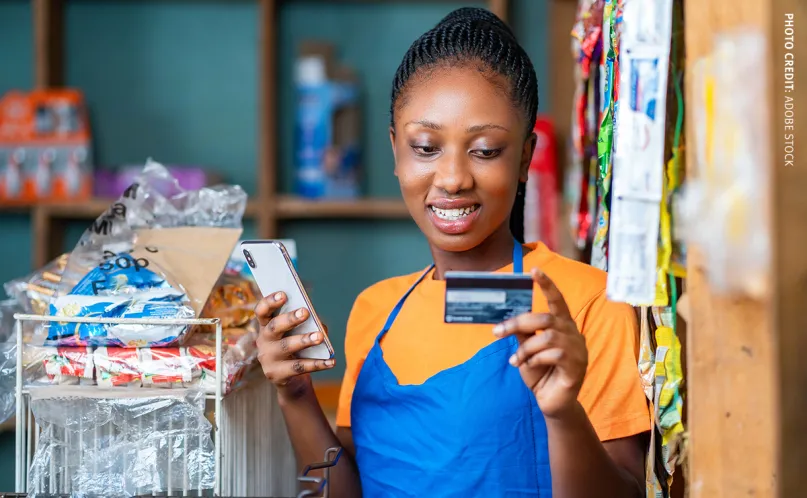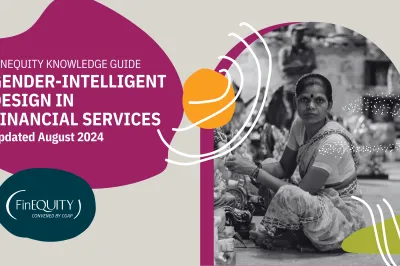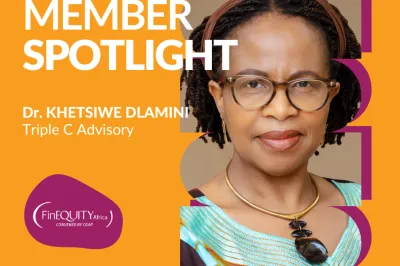Gender-Intentional Product Design in Africa: Successes and Challenges

Applying gender-intentional design (GID) in financial inclusion is a way to address persistent gender gaps by creating solutions tailored specifically to meet women's needs. In Africa, women continue to face higher unemployment rates than men, and according to the Global Findex 2021, the financial access gender gap in Sub-Saharan Africa is 12 percentage points, twice the developing economy average. Nonetheless, individual economies have made strides to drive equitable gender access. For example, Mali has significantly reduced its gender gap from 20 percentage points in 2017 to just five percentage points as of 2021. South Africa’s gender gap has been negligible since 2014. Despite some significant advancements on the continent, challenges remain.
Understanding the factors that contribute to the success or failure of financial products can offer valuable insights for financial service providers (FSPs) and policymakers. FinEquity has produced a resource guide on Gender-Intentional Design that aggregates a wide scope of resources that address gender-intelligent design: research, case studies, toolkits, and best practice guidelines. FinEquity Africa recently created a GID working group to explore key features that contribute to the success or failure of gender-intentional products in the African context.
Key features of successful gender-intentional products
The working group has brought together several FinEquity Africa members to engage on this topic, including FSD Mozambique, Women’s World Banking, WomenSave, and Digital Frontiers. Some of the key discussion points so far are:
The need to address gender-specific barriers
At the FinEquity Africa annual convening held in Addis in March 2024, GRID Impact highlighted how successful gender-intentional financial products recognize and address gender-specific barriers that limit women’s access to and usage of financial services. These barriers include social norms, policy inequities, and limited access to digital infrastructure. For instance, digital financial services (DFS) designed with a gender lens consider how cultural and structural factors impact women differently from men, ensuring that the product is accessible and usable for women.
Incorporating digital innovation
The partnership between Advans and CARE in Côte d’Ivoire is a good example of the crucial role that digital innovation can play in enhancing women’s access to financial services. Advans and CARE are using mobile services to make financial services accessible to rural women who otherwise have limited access to traditional banking facilities.
Training and financial literacy
Financial products or interventions that include ongoing training, financial literacy, and gender sensitivity education have proven effective in boosting women’s confidence in using financial services. Members of the working group have highlighted the CARE Uganda program as a good example. By combining basic training with household dialogue, the program has not only managed to increase women’s confidence, but also their ability to save and manage finances. Providing sustained support and empowerment opportunities for women is thus, another key feature of successful gender-intentional products.
Proximity, pricing, and community
Tyme Bank's success in attracting women customers can be attributed to several gender-intentional features in its offerings. By strategically locating Cash-In Cash-Out (CICO) access point kiosks within local neighborhood grocery stores, Tyme Bank ensured that financial services were easily accessible to women, particularly those who may face mobility constraints. The bank further enhanced its appeal by hiring agents from the local communities, fostering a sense of trust and cohesion among customers. This approach not only made the bank more approachable but also created a supportive environment for onboarding new female customers. Additionally, Tyme Bank's adoption of a transparent "pay-as-you-go" (PAYGo) fee structure and the use of technology to reduce operating costs allowed the bank to offer affordable and transparent financial products, addressing common concerns women have regarding hidden fees and financial risks. These combined efforts positioned Tyme Bank as a reliable and inclusive option for women, significantly boosting their access to financial services.
Challenges leading to failure
The partnership between Women's World Banking and Kenya Commercial Bank demonstrates how using gender-disaggregated data can significantly enhance decision-making and product development. One significant challenge in designing gender-intentional products is the lack of gender-disaggregated data at an institutional level. Without this crucial information, financial service providers (FSPs) struggle to understand and address the specific needs of women, resulting in products that often fail to resonate with female customers and lead to low adoption rates.
Additionally, many financial products available in Africa are not designed with women in mind, particularly those in rural areas. These offerings often overlook the realities of women’s lives, such as limited mobility, digital literacy gaps, and cultural restrictions. When financial products are neither relevant nor accessible, women are less likely to engage with them, perpetuating the gender gap in financial inclusion.
In rural and remote areas, geographical barriers and manual processes further complicate financial inclusion for women. The physical distance from banking institutions makes accessing services costly and difficult, while reliance on inefficient manual processes in traditional savings groups increases the risk of errors and fraud. Without the digitization and streamlining of these systems, it remains challenging to scale financial services to effectively reach and serve more women.
On September 4, 2024, at 15:00 SAST FinEquity will host a webinar focused on exploring the design and implementation of financial products specifically tailored to meet the needs of women in Africa. We will explore what makes a financial product truly relevant for women, learning from real-life case studies and expert analysis from CGAP and FSD Mozambique. The webinar will also highlight best practices and provide actionable recommendations for financial service providers, policymakers, and other stakeholders. Register today!


